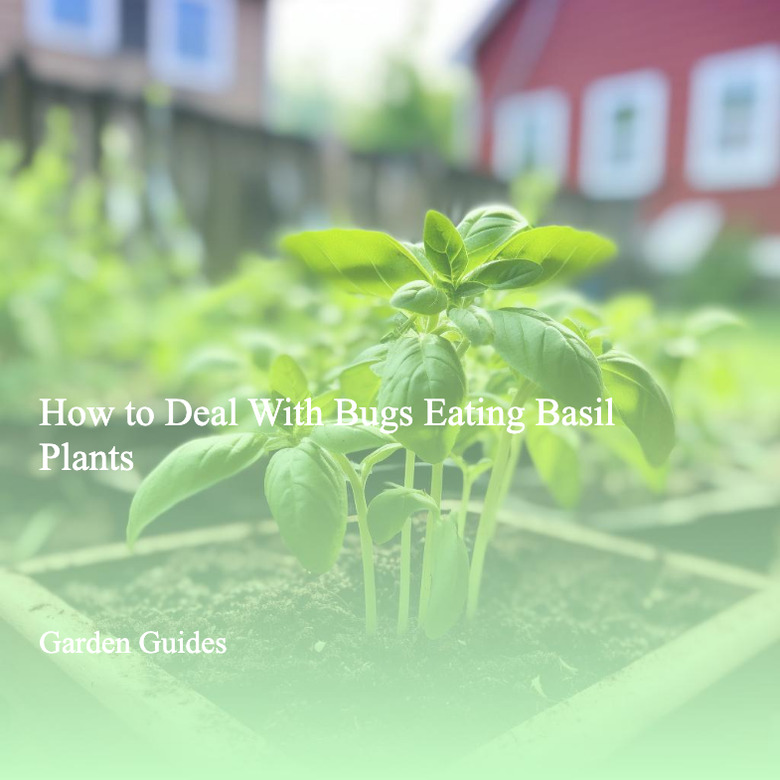How To Deal With Bugs Eating Basil Plants
Things Needed
- Nursery flat with drainage holes
- Potting soil
- Insecticidal soap
- Spray bottle
- Iron phosphate granules
- Diatomaceous earth
- Copper fencing
- Essential oil of orange
- Floating row cover
- Tanglefoot
Bugs like basil just as much as humans do. Slugs and snails are major pests to basil, especially young plants. A principle of organic gardening is to grow "some for you, some for them," meaning the critters that eat your plants. That way, you'll have plenty of basil for your pesto and spaghetti sauces, and the insects, who are only trying to survive, will be able to have their dinner as well. Because basil is such a soft-leaved plant, organic pest control methods are best if you don't want to eat poisonous substances that can remain on the leaves.
Step 1
Start basil seeds in flats filled with potting soil and then keep them on a table in a sunny spot. The height of the table will prevent most snails and slugs from climbing from their cool, moist ground level habitat up to the table where your baby basil plants are living.
- Bugs like basil just as much as humans do.
- Because basil is such a soft-leaved plant, organic pest control methods are best if you don't want to eat poisonous substances that can remain on the leaves.
Step 2
Dig diatomaceous earth or wood ashes into your planting area before you set your 3 to 4-inch basil plants into the soil. This will help keep away cutworms, which are often bothersome to basil.
Step 3
Control snails and slugs by encircling your bed with copper fencing or diatomaceous earth. Iron phosphate granules, sold as "Sluggo," are also effective for these pests.
Step 4
Cover your basil plants with floating row cover (such as Reemay) if you have a large population of troublesome insects such as beetles or grasshoppers. Remove this lightweight fabric cover at night.
Step 5
Control ants as soon as you begin to notice them, because they bring insects such as aphids and scale to the plant and eat their sticky secretion. The ants don't hurt your basil, but the aphids and scale suck the fluids from your plants. Knock all ants off your plants with a sharp stream of water, and then spread a product called Tanglefoot around the base of your plants to prevent the ants from returning. Be sure to follow label instructions.
- Dig diatomaceous earth or wood ashes into your planting area before you set your 3 to 4-inch basil plants into the soil.
- Cover your basil plants with floating row cover (such as Reemay) if you have a large population of troublesome insects such as beetles or grasshoppers.
Step 6
Spray your basil with insecticidal soap to get rid of aphids and young scale insects. Don't spray during the heat of the day, and be sure to repeat your application every day or two until all signs of these insects disappear.
Step 7
Mix 1 tsp. of orange essential oil with 24 oz. of water, and use it to spray your plants if mealy bugs or whiteflies affect them. Spray late in the day to prevent sunburned leaves, and continue spraying daily until the pests are gone.
Tip
Avoid planting your basil near lights that are on at night if your region is subject to June bugs.
